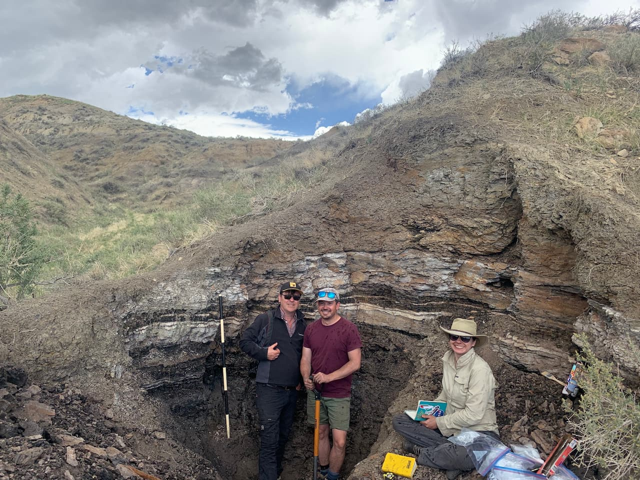The extinction of dinosaurs was preceded by a brief period of cooling.
The conclusion of the Mesozoic era and the onset of the Cenozoic era (which continues to this day) is marked by a mass extinction event. A thin layer of iridium (common in asteroids but absent on the Earth's surface) dating back 66 million years is found globally across the planet. This serves as the primary argument that the extinction was caused solely by a catastrophic impact.
At the same time, the dating of the Deccan Traps eruptions (2019 studies: 1,2) adds weight to the argument of those who believe that the extinction was not solely due to an asteroid impact, but also to powerful volcanic eruptions that occurred around the same time.
Now, a research team led by Lauren K. O’Connor from the University of Manchester (UK) has analyzed samples of lignites (a type of brown coal) found in the Pyramid Buttes (North Dakota) and West Bijou (Colorado) areas, revealing evidence of a brief but significant cooling on the planet approximately 66 million years ago (about 30,000 years before the mass extinction).
To understand how CO₂ sources in the Earth's atmosphere changed during the Late Cretaceous-Paleogene extinction, scientists also measured the ratio of carbon isotopes. The results of the study were published in the journal Science Advances.
It is worth noting that lignites are fossilized materials that preserve organic remains and biomarkers (so-called brGDGT lipids). These allow scientists to estimate air temperatures during the period of interest.
The analysis of the deposits indicated that over the last 100,000 years of the Cretaceous period, temperatures in the studied areas gradually increased by 3 °C. This trend is likely associated with prolonged CO₂ emissions from the Deccan Traps eruptions; however, about 30,000 years before the catastrophe, a sharp cooling of 2-5 °C occurred, lasting less than 10,000 years.

This event coincides with the "peak" of volcanism in India, when a substantial amount of sulfur was released into the atmosphere. Sulfur can convert into sulfate aerosols during intense eruptions, reflecting sunlight and causing temporary cooling.
However, the sudden drop in temperature did not coincide with the mass extinction and, according to the authors of the study, occurred several thousand years earlier. The article also notes that volcanic cooling was unlikely to be the "main culprit" behind the extinction of non-avian dinosaurs and many other organisms: when temperatures returned to previous levels, life continued to thrive until the asteroid impact.
While these new data do not refute the impact of the Deccan Traps eruptions on the mass extinction, they demonstrate that the brief cooling was not a decisive factor. Moreover, such short-lived climate fluctuations may have occurred earlier, although capturing them in geological records is challenging.
Scientists plan to study more extensive lignite layers to track all stages of the climate history at the end of the Cretaceous and to understand the impact of temperature changes on ancient ecosystems.